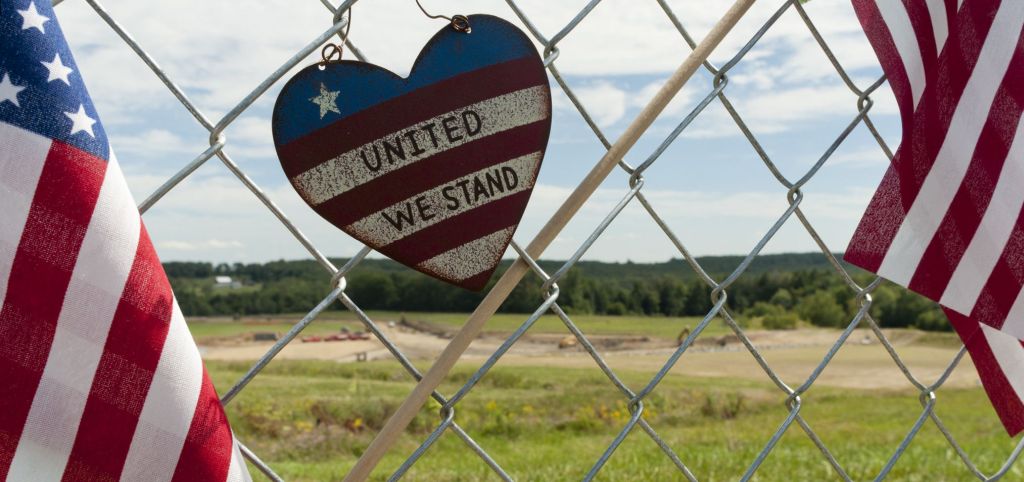On that fateful flight, American heroes and the accidents of history combined to save the US Capitol from likely total destruction.
-
September/October 2021
Volume66Issue6
Editor’s Note: James Reston Jr. is the author of 18 books including his just published novel about 9/11, The 19th Hijacker. Mr. Reston wrote the cover article for our June issue on the Vietnam Wall and is a Global Fellow at the Woodrow Wilson International Center for Scholars. Richard Whittle is the author of The Dream Machine: The Untold History of the Notorious V-22 Osprey and Predator: The Secret Origins of the Drone Revolution.
On that terrible day of September 11, twenty years ago, the revolt of the passengers on Flight 93 resulting in the plane hijacked by Al Qaeda terrorists crashing in Shanksville, Pennsylvania is rightly celebrated as one of the greatest heroic events in American history.
The lore of that amazing group, however, has come to so dominate American knowledge and understanding of that flight that the larger terror and implications of the fourth plane have been obscured. It is little understood how close the U.S. Capitol came to destruction that day, and how much its survival intact is due to happenstance. The passenger revolt is only the last of those happenstances.
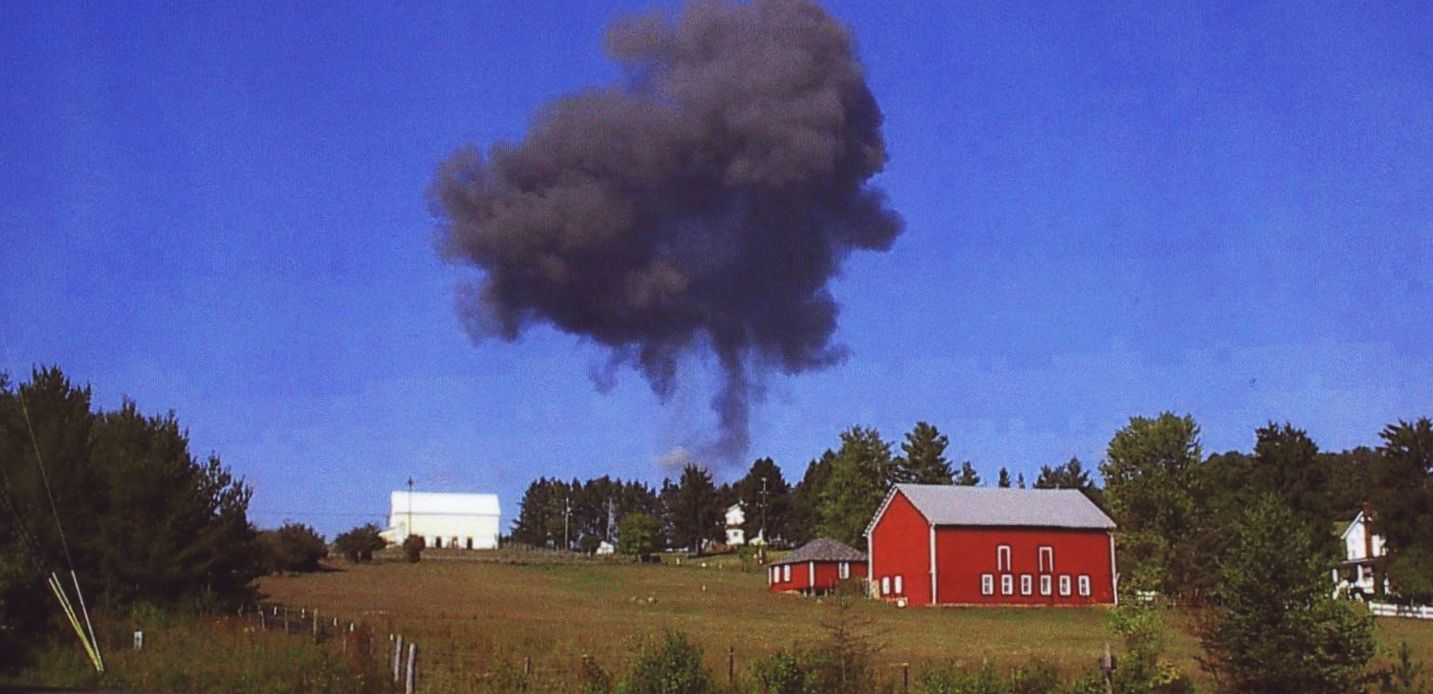
Equally important were the flight timelines of the four airliners hijacked that day and how those timelines altered the execution of the plot carried out by nineteen terrorists sent by Al Qaeda leader Osama bin Laden. Just as crucial was the composition of the terrorist team that took over Flight 93 over eastern Ohio forty-four minutes after it took off from Newark, N.J., putting the Boeing 757 on a course toward Washington, D.C., instead of San Francisco. The fact that Flight 93 took off late from Newark Liberty International Airport is the first critical precursor to the eventual fate of both the plane….and the U.S. Capitol.
The strategy of the 9/11 plot called for all four airliners to depart within minutes of one another and reach their intended targets at roughly the same time. American Airlines Flight 11 and United Airlines Flight 175 left Boston Logan International Airport fifteen minutes apart heading for the same destination, Los Angeles. American Airlines Flight 77, also originally bound for Los Angeles, pushed back from the gate at Washington Dulles International Airport at 8:10 a.m. But due to airport congestion in Newark, the departure of Flight 93 was delayed twenty-five minutes. The plane took to the air only at 8:42 a.m. Four minutes later, American Flight 11 out of Boston hit the North Tower of the World Trade Center (WTC).
In response, authorities immediately grounded all planes at New York-area airports. Had Flight 93’s departure from Newark been delayed a mere few minutes more, the plane would not have taken off at all. United Flight 175, the second plane the hijackers took over after departure from Boston, hit the South Tower of the World Trade Centers at 9:03 a.m., twenty-one minutes after Flight 93 was in the air.
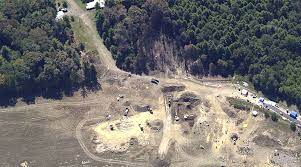
What has become clear only with the passage of time is that public awareness of airplane hijackers in 2001 was based on an old model of the 1960s, 1970s, and 1980s. An American Journal of International Law study found that between Jan. 1, 1969, and the end of 1972, a phenomenal 277 U.S. and foreign aircraft were hijacked. Airliner hijacking had become a favorite weapon for Arab terrorists. But the modus operandi was usually to take one or more planes, land them in some location relatively safe for the terrorists, and hold the passengers hostage while demands were made. The passengers and the planes were used as bargaining chips. In most cases the passengers were eventually released.
Against this historical background, U.S. and other authorities might at first have assumed on Sept. 11, 2001, that the Islamic hijackers were following the usual pattern. Al Qaeda’s plot to use planes as suicide bombs was nearly inconceivable and marked a bloodcurdling and unforeseen new chapter in the sordid history of hijackings.
Unlike the passengers on Flight 93, those aboard the other three planes would have been in the dark about what was happening until the very end. Undoubtedly, their hopes rested on the old model of safe landing, negotiations, and eventual release. A suicide mission to destroy the great symbols of American economic, military, and political power could scarcely have been imagined – certainly not within the space of thirty minutes.
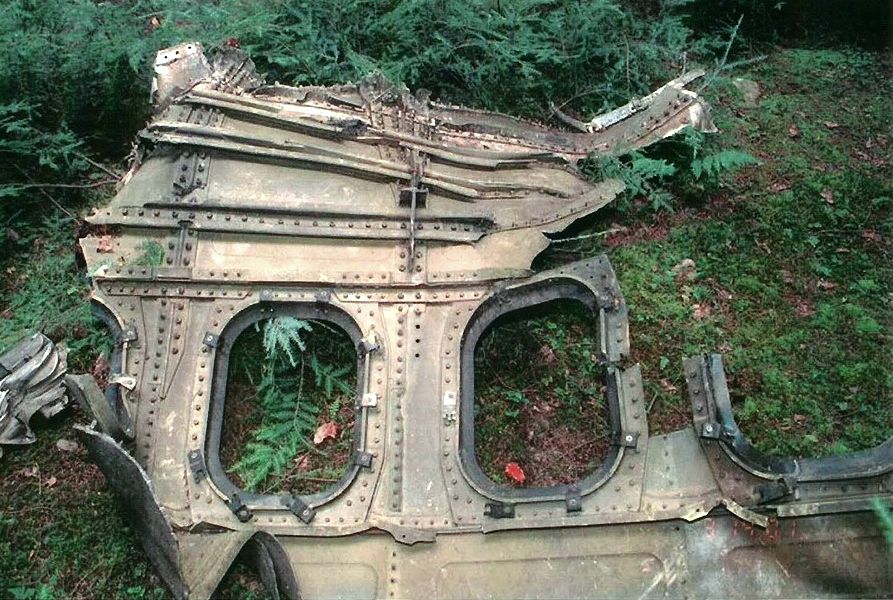
In any case, there is no evidence of passenger revolt on any of the planes other than Flight 93, though several passengers did make cell phone calls from the rear of Flight 77 as it headed for the Pentagon. One of them was Barbara Olsen, an accomplished attorney, television commentator, best-selling author and wife of former U.S. Solicitor General Ted Olsen. Olsen has said he received two cell phone calls from his wife before the plane crashed.
With three “muscle hijackers” armed with box cutters and knives aboard each plane other than Flight 93, and with less time to act between hijacking and impact, the chances of passengers on Flights 11, 175, and 77 being able to overpower their hijackers and prevent them from hitting their targets would have been slim.
But Flight 93 had only two muscle hijackers rather than three posted in its cabin to control passengers. This manpower shortage is the second critical factor that spared the U.S. Capitol that day. An Al Qaeda operative who was supposed to be the third minder, Mohammed al Qahtani, had been apprehended by immigration officials as he attempted to enter the United States at Orlando Airport on August 5, 2001, where he arrived as a passenger from Dubai.
Al Qahtani had only $2,800 in his possession, and he was unable to state where he was going in the United States or why he had made the trip. In his questioning he became hostile with immigration officials, and so he was turned back to Dubai.
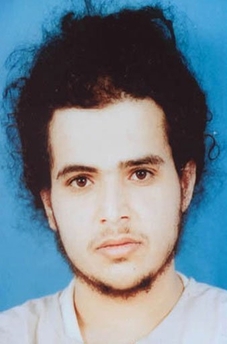
This intended twentieth 9/11 hijacker and fifth member of the Flight 93 team was later captured by Pakistani forces in December 2001 and turned over to the Americans. He has been imprisoned at Guantanamo Bay ever since. There, he was frequently tortured, in a program specifically designed by then Secretary of Defense Donald Rumsfeld, and turned into a virtual basket case, consumed with schizophrenia, depression, hallucinations, and PTSD. In its effort to reduce the population in Guantanamo Bay, al Qahtani is considered so mentally ill that he is now a candidate to be released.
The wavering commitment of the hijacker pilot of Flight 93 on 9/11, Ziad Jarrah, is another part of the dynamic that saved the Capitol. Unlike the other 9/11 hijackers, Jarrah was Lebanese, not Saudi Arabian. The product of an upstanding middle-class family from Beirut, his uncle was a member of the Lebanese Parliament, and his extended family owned a number of commercial establishments in the Bekaa Valley.
To the co-chairs of the blue ribbon 9/11 Commission, former Governor Tom Kean of New Jersey and former U.S. Representative Lee Hamilton of Indiana, Jarrah was a figure of special interest. They found him intriguing partly because of his middle-class origins but much more importantly, because he nearly pulled out of the operation a month before 9/11 due to his relationship with a Turkish-German woman named Aysel Şengün.
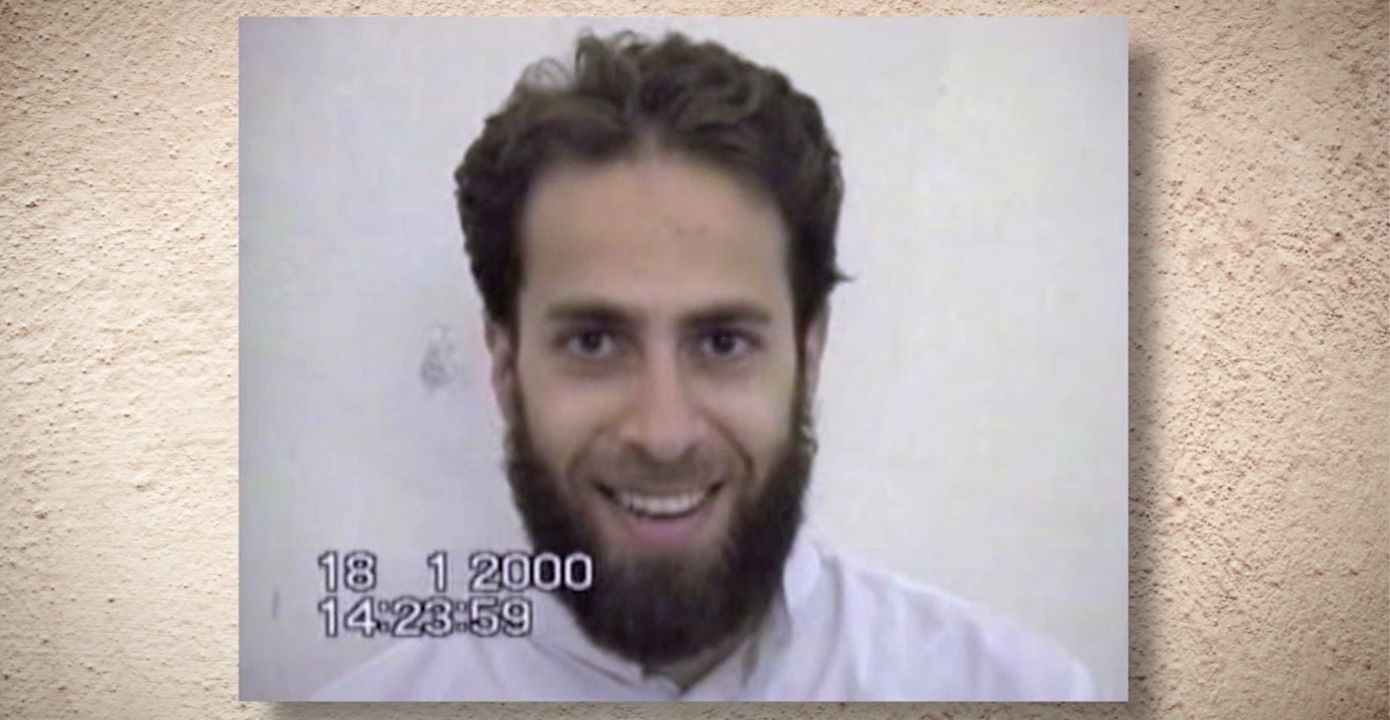
In carrying on his love affair, Jarrah was violating a cardinal rule of Al Qaeda to sever all relationships with family and loved ones. In the months before 9/11, however, Jarrah had married Şengün in a quiet Islamic wedding and had visited her in Germany several times. She, in turn, spent two weeks with Jarrah in Florida during his flight training. And so, as the date for what Al Qaeda called the “Planes Operation” came closer, Jarrah faced a choice: to honor the oath of allegiance he had sworn to Osama Bin Laden or to break that oath and flee with his wife to some far-flung refuge. On the night of September 10, 2001, Jarrah sat down in a Newark motel and wrote his wife a love letter. In acknowledging his choice he displayed his confusion, his rationalization, and his moral weakness.
“I regret that you must wait until we come together again. I did not run from you. I did what I was supposed to. Everyone has his time. And this is my time. You should be proud of me. This is an honor. You will see the results, and everybody will be happy.”
And on the morning of September 11 itself, before he left for the Newark airport with his three hijacker team members, Jarrah called Şengün on the telephone for a final goodbye.
Al Qaeda was aware of Jarrah’s divided loyalties. A fully committed operative had been assigned to him as a minder to watch his every move in the last weeks before 9/11. And a Moroccan named Zacarias Moussaoui had been designated as Jarrah’s backup in case Jarrah suddenly fled. But by 9/11 Moussaoui was no longer available. In August, still in flight training in Minnesota, Moussaoui was arrested on an immigration charge. (Later indicted by a federal grand jury for his participation in the 9/11 plot, Moussaoui is the only Al Qaeda figure who was tried and convicted in U.S. court. He is now serving a life sentence in a maximum-security prison in Colorado, having escaped the death penalty by the vote of one juror.)
Of the four hijacker pilots on 9/11, Jarrah was both the most attractive and the least skilled. During his Florida training, he was the perfect sleeper agent. Handsome with a jolly demeanor and a ready smile, he was welcomed in flight school as an interesting curiosity. A fellow student, a German who became a pilot for Air Berlin, liked him and had no inkling of Jarrah’s double life.
But Jarrah was not a very bright bulb. As with schooling earlier in his life when he had required an extra year of high school and struggled with his schoolwork in college in Hamburg, Germany, Jarrah was a slow learner requiring special accommodations. After a long struggle, his graduation from flight school was a cause of joyous celebration for his flight instructor. (She fled abroad shortly after 9/11 to avoid scrutiny as one who had trained a terrorist to fly commercial aircraft.)
Some people still espouse the notion that Jarrah’s intended target might have been the White House, but that is highly unlikely, partly because of Jarrah’s limited aptitude as a pilot. The most skilled flyer among the terrorists was the hijacker pilot of Flight 77, Hani Hanjour. He had had more flight training than the others and was given perhaps the most difficult target – the Pentagon. After taking off from Dulles International Airport in Virginia, Air Traffic Control radar showed Flight 77 flew across West Virginia to Eastern Kentucky, where the hijackers took control and made an abrupt about-face toward Washington.
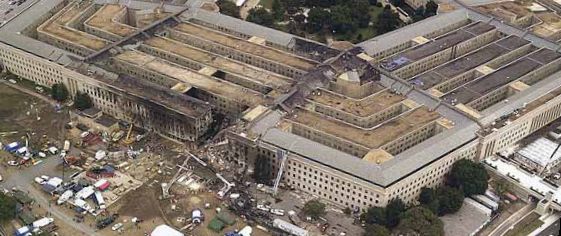
Coming in over Alexandria, Va., at 7,000 feet, Hanjour found himself too high to hit his target and turned off the auto pilot. With the plane now in his personal control, he expertly executed a sharp 330-degree turn, descending to 2,200 feet and achieving his intended flight path. Then he advanced the throttle to maximum power. The plane slammed into the Pentagon at 530 miles per hour. As it neared the building, the Boeing 757 was so low to the ground it clipped an antenna on a vehicle and severed some light posts. Its right wing struck a piece of construction equipment sitting next to the Pentagon, and one-tenth of a second later the plane smashed into the five-story above-ground part of America’s military headquarters. Its fuel ignited a massive fireball that raged over the exterior and through the interior of the building.
There is nothing in Flight 93 hijacker pilot Ziad Jarrah’s background to suggest that he had either the skill or the cold-blooded calm of Hanjour to execute unplanned, spontaneous maneuvers, close to the ground and at a high rate of speed. Jarrah’s target was clearly and incontrovertibly the U.S. Capitol. From high in the air, the White House is a needle in an urban haystack, a three-story mansion nestled among tall office buildings and stately trees. The U.S. Capitol is easy to see from the air for anyone, trained pilot or not.
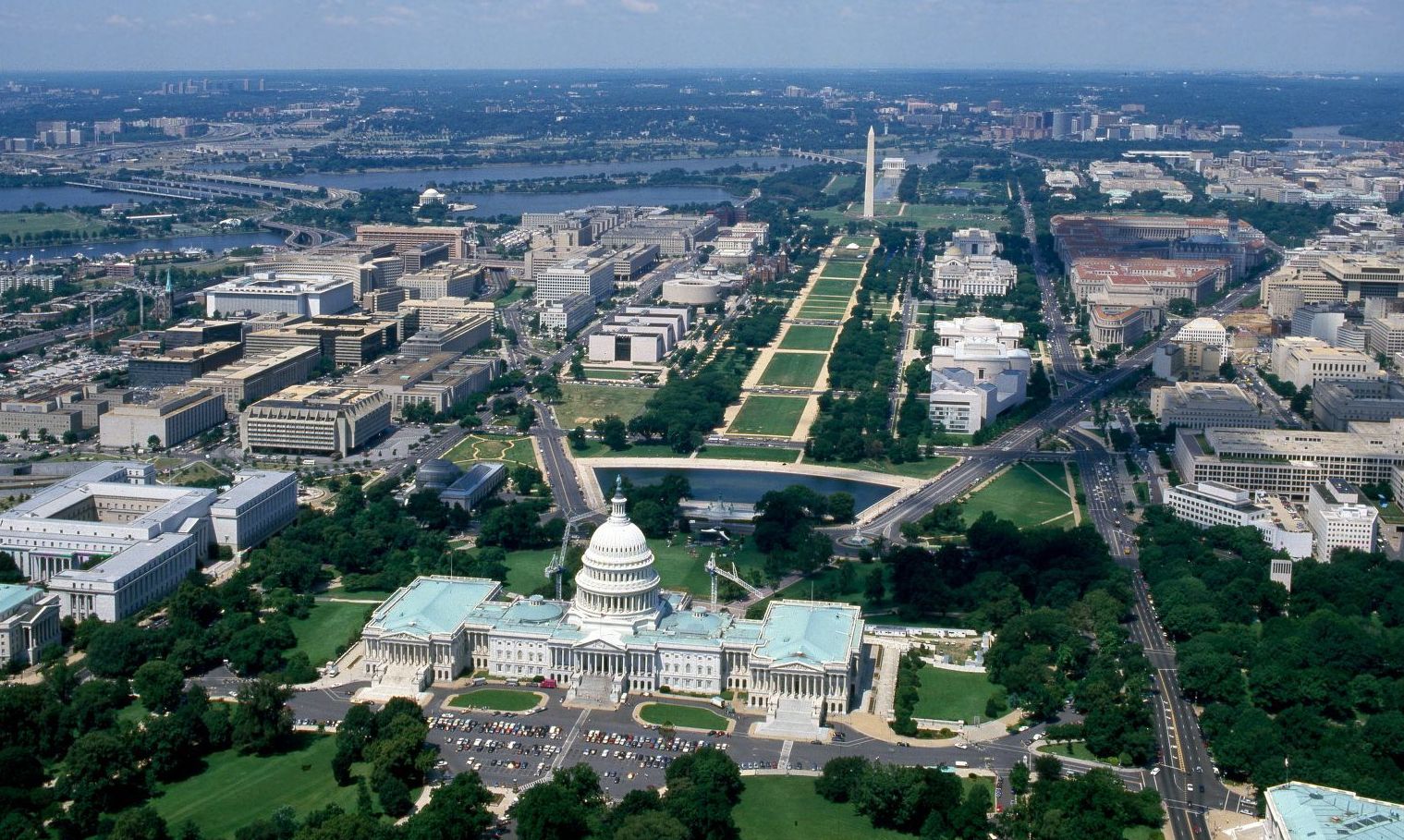
Built on a plateau 88 feet above the water level of the nearby Potomac River – “a pedestal waiting for a monument,” as the French engineer who planned Washington, Pierre Charles L’Enfant, saw it – the Capitol is crowned by an easily recognizable, gleaming white dome that stands 287 feet above ground level. From one end to the other, the Capitol’s House and Senate wings stretch 751 feet 4 inches, while the building’s footprint covers 175,170 square feet, or about four acres. L’Enfant envisioned the Capitol as the center of the City of Washington and, by implication, the beating political heart of the United States.
Topped by the Statue of Freedom that faces east, the Capitol looks down imposingly on the National Mall, a westward, open expanse that stretches past the Washington Monument to the Reflecting Pool and the Lincoln Memorial, bordered by Smithsonian museums. For the diabolically skilled 9/11 plotters, aware of the dull instrument they had in Jarrah, the Capitol was the obvious target.
After its late departure from Newark, Flight 93 proceeded west routinely for 46 minutes. It is unclear why it took the hijackers so long to act. The plane was taken over at 9:28 a.m., fifteen minutes later after takeoff than the other three planes were hijacked that day. By contrast, Flight 11, piloted by the mastermind of the plot, Muhammad Atta, was hijacked 20 minutes after it was airborne. As a result, Flight 93 was much farther away from its intended target than the other planes when Jarrah took the controls. This, too, was a crucial factor in sparing the Capitol.
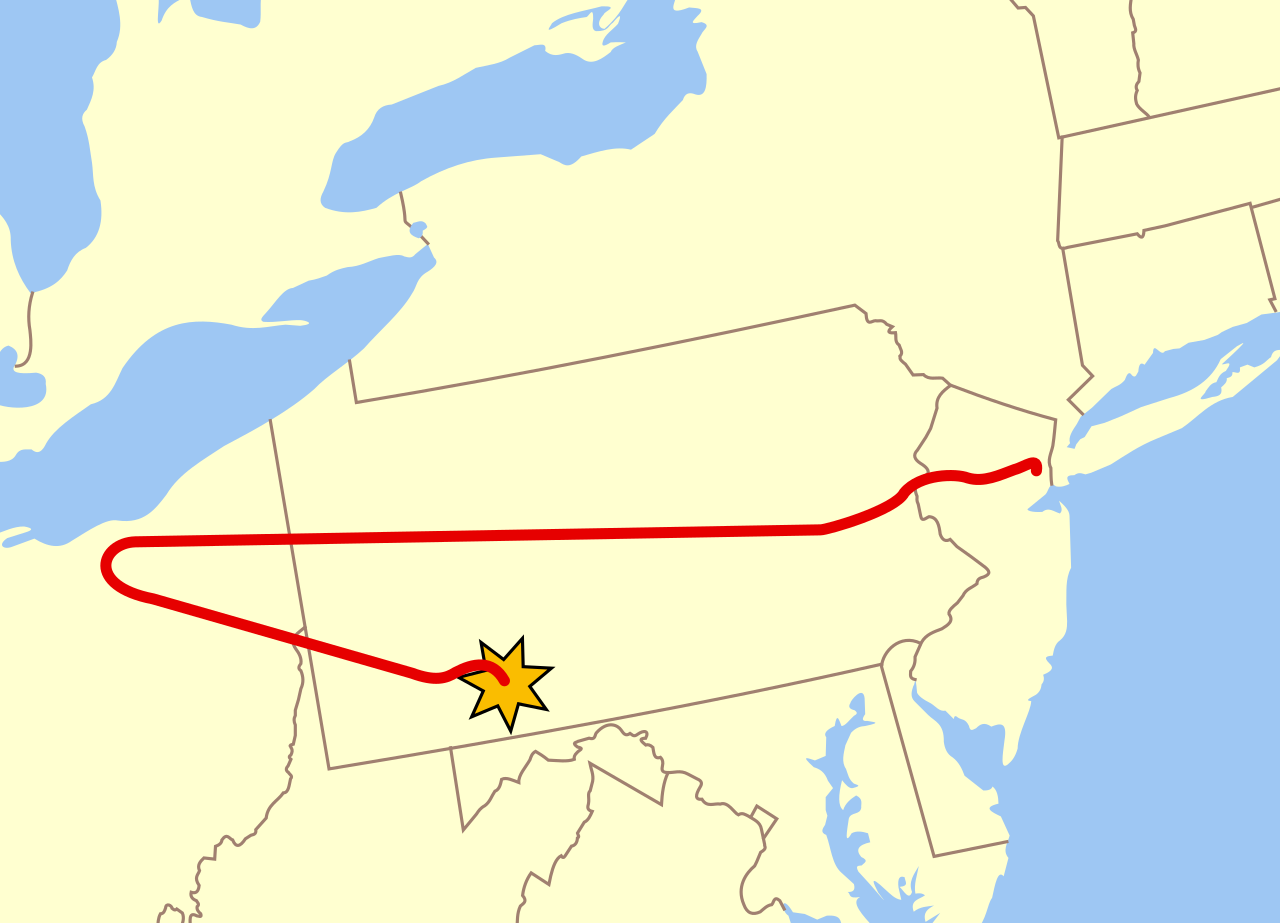
Shortly after the hijackers took control, Jarrah’s voice came over the intercom, in halting English tinged with an accent part Arabic, part German. “Ladies and Gentlemen. Here is your captain speaking. Please sit down. Remain seated. We have a bomb on board.”
The assertion of a bomb on board was obviously a ploy and clearly part of the plan, employed in all four hijackings, presumably as a way to keep the passengers in place. But in making his announcement over the intercom, Jarrah had failed to turn off the plane’s radio link to the ground, and his statement was overheard by the Cleveland Air Traffic Control Center.
At 9:41 Jarrah turned off the plane’s transponder, the devise that emits primary tracking information to the ground and other aircraft. This, too, was clearly part of the plan, done on all four hijacked planes to make their whereabouts harder to determine. Nevertheless, using other techniques, the Cleveland ATC was able to keep tracking Flight 93’s southeasterly course.
As Jarrah took the plane toward Washington, Flight 93 passengers began to make cell phone and Airfone calls. They quickly learned that three other planes had been hijacked and had been flown into the World Trade Centers and the Pentagon.
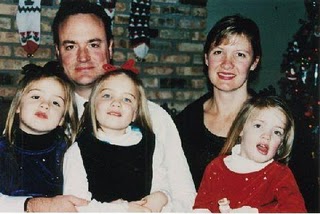
They were now pawns in Osama bin Laden’s grand plot against America. With red bandanas tied around their foreheads, the two muscle hijackers aboard Flight 93 seemed not to care whether passengers were contacting their loved ones. They even goaded the passengers to make their calls, scoffing that those would be their last.
Thirty-seven phone calls were dialed from the last five rows of the plane. One passenger, Jeremy Glick, spoke to his wife for 25 minutes. Dialing from an Airfone in Row 26, passenger Linda Gronlund left a voice mail for her sister at 9:46 saying, “Apparently they flew a couple of planes into the World Trade Center already and it looks like they’re going to take this one down as well.” Over the Airfone in Row 32, passenger Todd Beamer told GTE operator Lisa Jefferson that the United Airlines pilot and first officer lay injured or dead on Flight 93’s First Class cabin floor. Beamer told the operator he and other passengers were planning to try to overwhelm the hijackers and retake the aircraft.
As all this was happening, Jarrah typed the navigational code for Reagan National Airport into the Boeing 757’s flight control computer. As Flight 93 proceeded southeast from Ohio toward Pennsylvania, thirty-three minutes remained for the passengers to deal somehow with their deadly dilemma. The two muscle hijackers brandished knives and box cutters and screamed their demands. One had a little red box strapped to his waist that was supposed to contain their supposed bomb. (No bombs were determined to be on any of the four planes.)

To the desperate passengers, however, the two hijackers mustn’t have seemed overly intimidating. According to the 9/11 Commission report, they were small men, between 5’5” and 5’7” tall. Among the passengers, by contrast, Todd Beamer was an athletic star in high school and college, six feet tall, weighing 200 pounds. Passenger Tom Burnett had been a high school quarterback in Bloomington, Minnesota. Mark Bingham had run with the bulls at Pamplona. Don Green was a wrestler in high school and at Brown University and licensed to fly small planes.
The decision to storm the cockpit began with a profound act of democracy, a vote to storm or not to storm. If the revolt succeeded, the hope was that controllers could talk Don Green through a safe landing. Then, over the Airfone in Row 32, operator Lisa Jefferson heard Todd Beamer’s immortal words, the quintessential line of Flight 93:
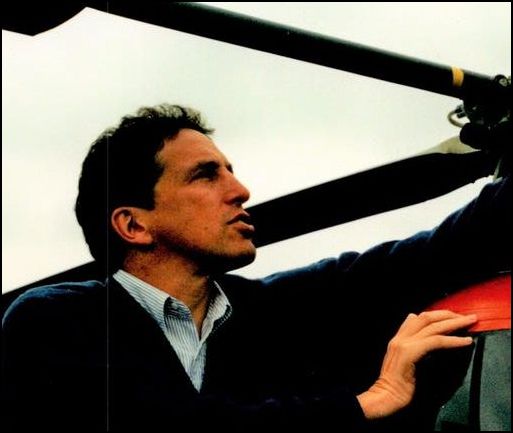
“Are you ready? Okay. Let’s roll!”
What happened next is well known. As the passengers swept forward, overwhelming the two diminutive muscle men, and using a food cart as a battering ram, Jarrah rolled the plane left and right sharply to knock them off balance, then pitched the plane up and down, testing the aircraft’s structural limits.
With the cockpit door close to splintering, there was an audible interchange between Jarrah and his Al Qaeda minder in the cockpit. “Shall we finish it off?” Jarrah asked. “No, not yet. When they all come in, we finish it off,” came the reply.
Jarrah mouthed the takbir twice – “Allahu Akbar” (God is the greatest.) Then, after more crashing sounds, the other terrorist told Jarrah, “Yes, pull it down.”
There was a pause, followed by Jarrah screaming over and over, “Give it to me. Give it to me!” This suggests that in the last seconds Jarrah lost his nerve. There appears to have been a struggle between Jarrah and his minder, as if the minder had seized the yoke from Jarrah and was pushing it forward to crash the plane in the final act.
In its final seconds, the big 757 rolled onto its back before plunging into the mud and hemlock trees of Shanksville upside down.
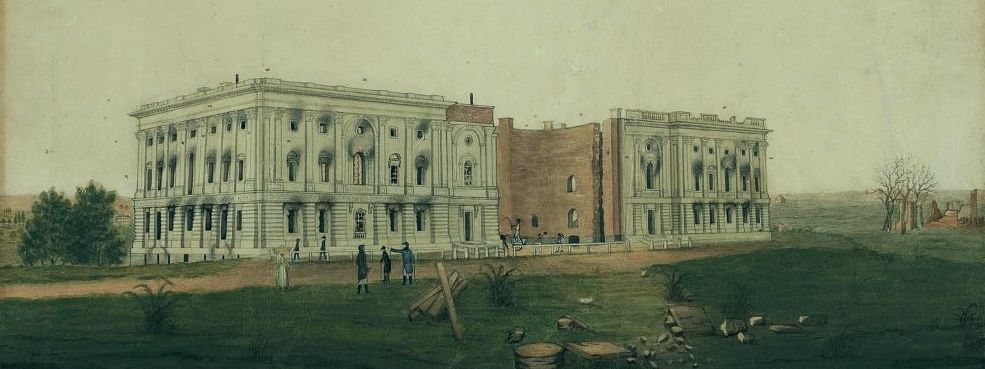
In the wake of the Jan. 6 assault on the Capitol this year in Washington, the media often reported that the riot was only the second time in American history the U.S. Capitol had been attacked. The first time was Aug. 24, 1814, when British soldiers burned the north and south wings of a much smaller Capitol, setting furniture coated with gunpowder paste aflame in what was then the Hall of the House of Representatives, today’s Statuary Hall. The conflagration melted the chamber’s glass skylights and destroyed a life-size marble statue of “Liberty Seated on a Pedestal” above the Speaker’s rostrum. The Redcoats used furniture, papers, and 3,000 books in the Library of Congress, then housed in the Capitol, to torch the Senate and Supreme Court chambers as well.
Calls afterward to move the capital to Philadelphia failed, and sandstone elements of the Capitol that withstood the fire can still be seen today on the second floor of the building. The attack on 9/11, had it succeeded, would have rendered the British sacking and the insurrection of Jan. 6 mere pinpricks by comparison. The Capitol was only twenty minutes away from total destruction.
“I really don't think people appreciate what could have happened if those heroes had not done what they did,” Alan M. Hantman told us. On Sept. 11, 2001, he was the Architect of the Capitol and was at his desk when Flight 93 crashed in Shanksville. On that desk was a model of the statue of Freedom that sits atop the Capitol dome. Certain that the passengers of Flight 93 saved the Capitol, and his own life, Hantman donated that model to the Flight 93 National Memorial at Shanksville. He will be there this Sept. 11 to help remember the heroism of the passengers.
It is devoutly to be wished that any random group of Americans, when faced with the dire circumstances that confronted the passengers of Flight 93 would react in the same way, rather than meekly stay put in prayer. But that is highly unlikely. That these heroes were ready to act is the last of the happenstances in the saga of Flight 93 and their abiding contribution to history.
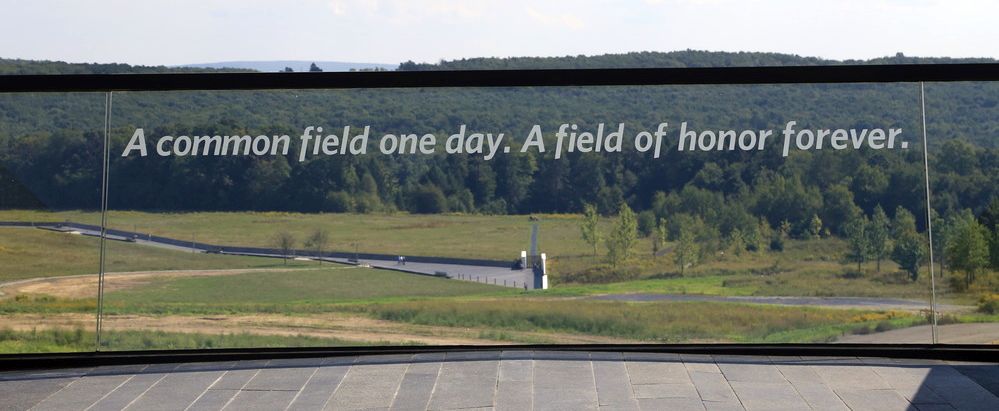
One is left to ponder the happenstances. What if Mohamed al Qahtani hadn’t been arrested in Orlando and three muscle men instead of two had been aboard Flight 93? What if the flight had taken off on time instead of departing Newark twenty-five minutes late? What if the hijacking of Flight 93 had taken place within 15 minutes of takeoff like Flight 11 instead of 45 minutes? Had that taken place, Flight 93 would have been only 10 minutes away from Washington rather than 30 minutes. What if the hijacker pilot of Flight 93 had been more skilled, committed and cold-blooded like the pilot of Flight 77? What if the assault on the cockpit door had failed to frighten the hijackers into crashing the plane? Or what if Jarrah’s wild maneuvers up and down, side to side, had indeed unbalanced the attackers at the cockpit door and rendered the mutiny ineffective? And finally, what if the makeup of the passenger pool had been more normal than extraordinary?
What if...?
“When you think about it, all the side elements that contributed to the plane going down over Shanksville were really related to the final step, a democratic vote to attack the hijackers,” said Alan Hantman. “That’s what drove the pilot of the plane to take it down, rather than risk having the passengers take it back under their control.”
Given the infinite number of variables involved in an airliner hitting the Capitol – angle and point of impact, speed, gas load, just to name a few – a supercomputer might be needed to calculate just what physical damage to the building and the debris field beyond on Capitol Hill might have been, or to estimate how many casualties such a strike would inflict.
But we have the example of what Flight 77 did to the Pentagon. A massive structure of reinforced concrete columns with masonry fill, hastily built in 16 months during World War II, the Pentagon’s exterior walls are limestone backed by unreinforced brick. On 9/11 the Pentagon was in the early stages of a 17-year renovation that included installing blast-proof windows in the “wedge” of the building the airliner struck.
The American Society of Civil Engineers conducted a study of Flight 77’s flight path, aided by a supercomputer analysis. It found that the worst damage was caused by the fireball ignited by the approximately 36,200 lbs. of fuel aboard the Boeing 757. Except for their heavy engines and landing gear, aircraft structures are designed and built to be as light as possible. Consequently, “the damage pattern throughout the building and the locations of fatalities and aircraft components, together with the deformation of the columns, suggests that the entire aircraft disintegrated rapidly as it moved through the forest of columns on the first floor,” the ASCE study concluded.
The Capitol is a construction of brick, stone and other masonry, steel, Aquia Creek sandstone, Indiana limestone and Georgia marble capped by a massive, nine-million-pound cast iron dome. Beside its significance to the American soul, it is also a symbol of American ingenuity, craftsmanship, resolve, and resiliency. Richly furnished, the Capitol is also a living museum of art. Its chambers, meeting rooms and hallways are filled with irreplaceable paintings and sculptures.
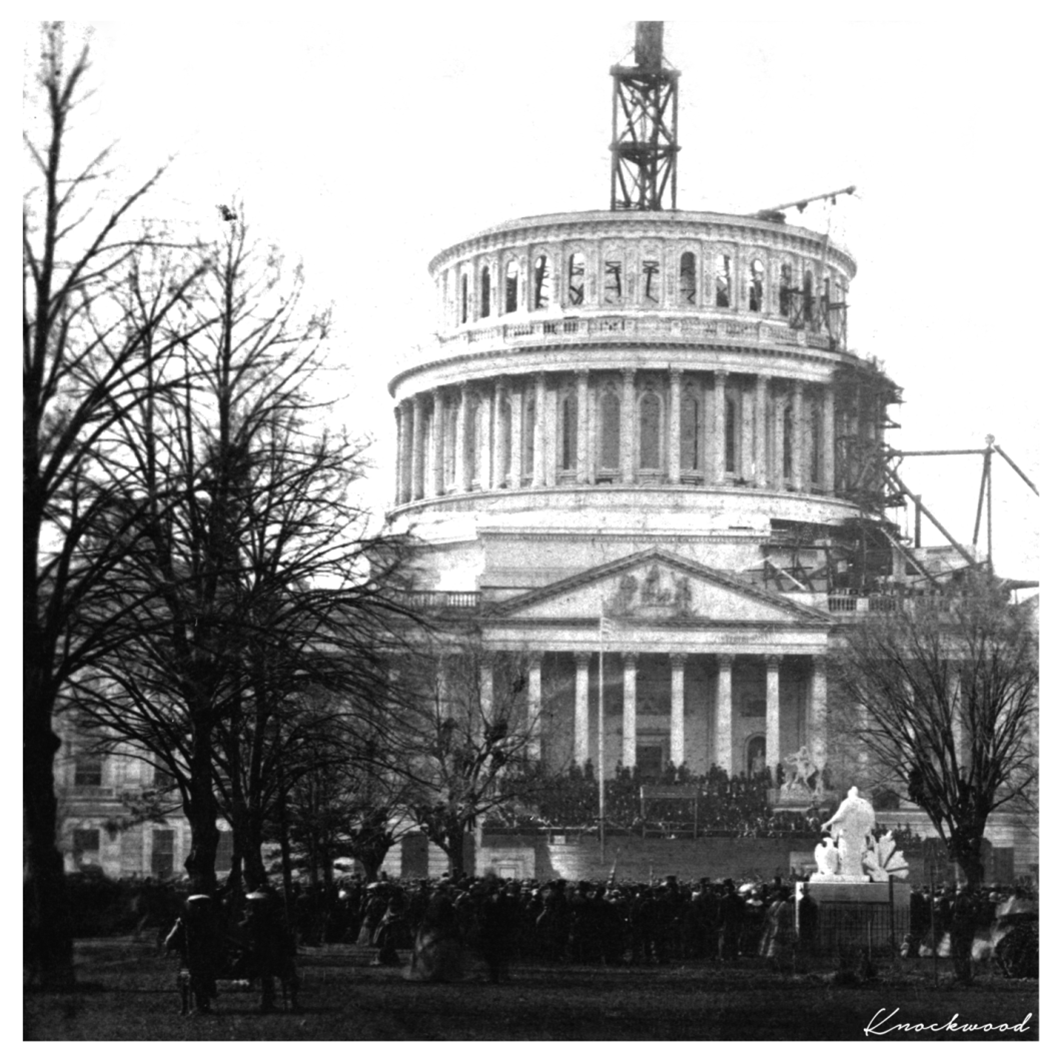
Much of that treasure surely would have been lost if Flight 93 had hit its intended target and the aviation fuel aboard that Boeing 757 burned as the fuel aboard Flight 77’s did at the Pentagon. Thousands of lives also could have been lost in what at the time was a fully occupied building, many of them in the dining rooms, kitchens, barber shops and other facilities on the first floor and basement levels of the Capitol. How large the loss would have been would depend on many variables. Would the mighty dome still have stood because the aircraft hit to one side or the other? Would the stately rotunda have been consumed by flames larger and hotter than those that drove the British arsonists from the building in 1814? Might the exterior damage have been confined to a big ugly gash in one of the ground floors? The permutations are too many to calculate.
Even if the physical damage Flight 93 striking the Capitol might have caused cannot be precisely calculated, the shock to America’s pride is easy to imagine. This surely was a central goal of Al Qaeda. The World Trade Centers were symbols of American economic might, the Pentagon a symbol of military prowess. The Capitol is the apotheosis of the American nation.
Politically and militarily, damaging or even destroying the Capitol would have done little to change the U.S. military response. The October 7, 2001 invasion of Al Qaeda’s bases in Afghanistan and the decade-long quest that followed to make Osama bin Laden pay with his life, would have proceeded apace. But with the Capitol a shell for a few years, how much more xenophobic would the country have become than it already was? How much more vitriolic would our political discourse have been? And how much more preoccupied with the clash of civilizations between the east and west?
During the summer of 1861, the construction of the Capitol was still incomplete, and work on it was halted briefly. The American nation too was still in the process of becoming. At his inauguration, with the half-built dome as a backdrop, Lincoln proclaimed, “I have no purpose, directly or indirectly to interfere with the institution of slavery in the states where it exists. I believe I have no lawful right to do so, and I have no inclination to do so.” Four years later at his second inaugural, the dome was completed, and Lincoln had changed his mind.
One can only wonder if on January 6, 2021 any of the rioters parading through the basement of the Capitol had paused at the plaque that honors those who saved the Capitol.
